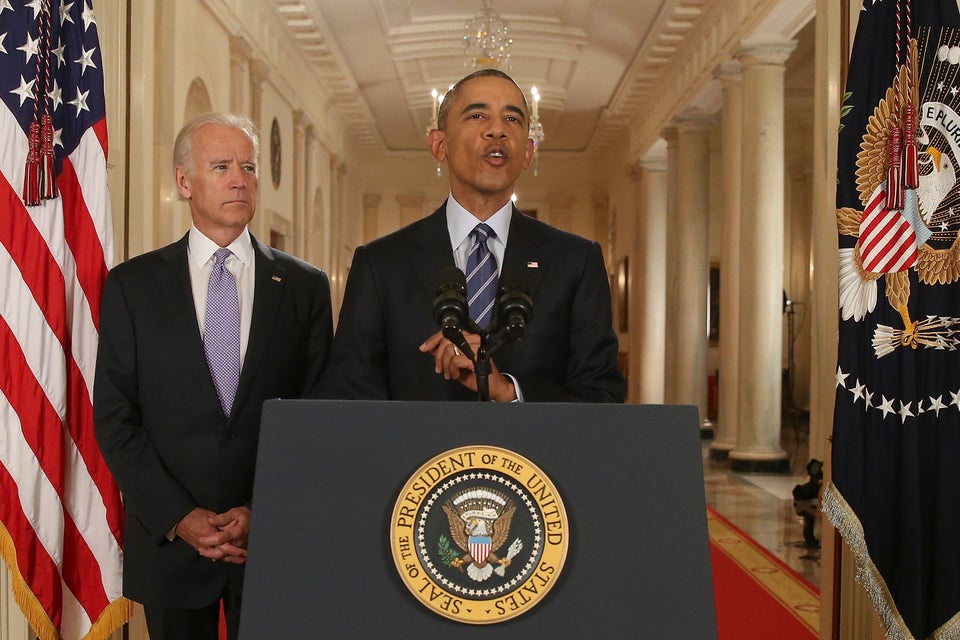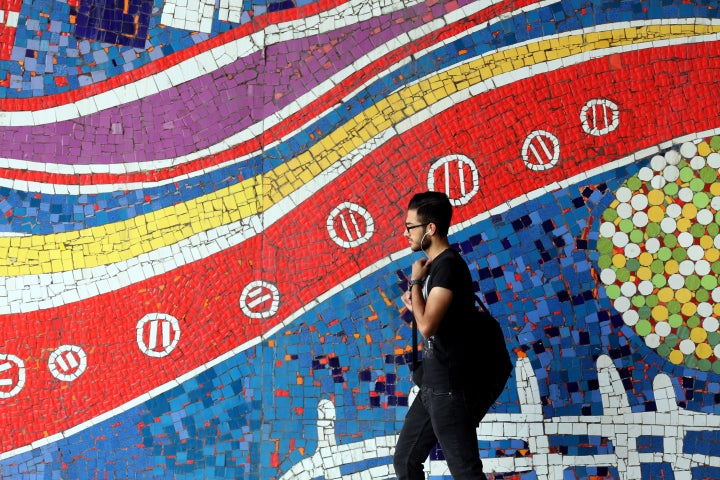
President-elect Donald Trump’s harsh comments regarding the Iran nuclear deal are well known. What is less known is what his actual Iran policy will look like, though there are speculations that under his leadership the Joint Comprehensive Plan of Action, or JCPOA, and the progress made between Washington and Tehran are in danger of falling apart.
So what does a Donald Trump presidency mean for U.S-Iran relations? It’s hard to say because the president-elect is unpredictable, but there are two plausible scenarios that come to mind, both of which would have an impact not only on bilateral relations, but also on Iran’s ability to reform its economy from within. On the one hand, we could have an inwardly-focused president who wants to spend $1 trillion on domestic infrastructure alone. That’s something Donald Trump reiterated during his first post-election interview on 60 Minutes: “We’ve spent $6 trillion in the Middle East, $6 trillion we could have rebuilt our country twice.” If this domestically-oriented philosophy takes hold in the United States, whatever its impact on “pax Americana,” Iran’s own principlists will have a weaker red herring in the United States that has been used to slow reform up to this point.
“If Trump embraces the more extreme voices of his proposed cabinet, it would not only kill the progress moderates in Iran have made, but it would also end any opportunity of U.S.-Iran détente for a generation.”
On the other hand, Trump could prove to be a president who embraces the views of the more extreme voices of his proposed cabinet. General Michael Flynn, his national security adviser, for example, has claimed that Islam is not a religion but a “political ideology.” Congressman Mike Pompeo, his pick to lead the CIA, recently tweeted, “I look forward to rolling back this disastrous [Iran] deal.” This tactic would not only kill the progress moderates in Iran have made and their chance to reform, but it would also end any opportunity of U.S.-Iran détente for a generation.
But regardless of what route Trump choses, Iran will still continue to rebuild relationships around the globe. President Trump will not be able rebuild the sanctions coalition that President Obama was able to create pre-JCPOA. If he goes it alone, he could even risk isolating the United States’ voice in the process.
The real question of Iran reaching its economic potential comes down to its own ability to reform, despite domestic opposition within the country. And for Iran to be able to make these major alterations, two things have to happen: One, influential figures in Iran have to develop an Islamic Republic that is relevant to the young population. Two, President Trump has to cooperate in deciding not to act on his more overzealous, anti-Iran campaign promises that would empower the principlists in the country.
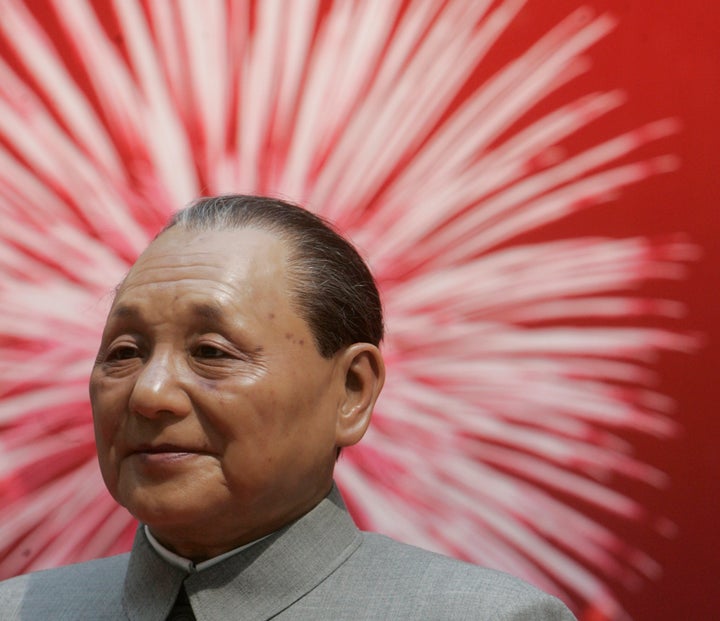
What Iran Can Learn From China About Reform
So where does China come in? China’s stable transition away from its post-revolution rhetoric under the “People’s Republic” is a constructive example of how Iran can tackle the first point. The historical pride, disdain for past leaders who were seen to have compromised their sovereignty, political revolution and years of resistance against the United States give the two countries an overarching resemblance. However, China has been able to move forward from its revolutionary rhetoric to develop a self-image that is relevant to its population. Iran has yet to do so, but this may just be its chance.
Earlier this month, Iranian Supreme Leader Khamenei reportedly gave a speech to thousands of university and secondary school students in Iran around the anniversary of the infamous U.S. embassy takeover in 1979.
“China has been able to move forward from its revolutionary rhetoric to develop a self-image that is relevant to its population. Iran has yet to do so.”
The purpose of the speech was to describe why this event transpired and to reaffirm his support for it. He focused on the fact that the 1953 U.S.-led coup of the democratically elected prime minister, Mohammad Mossadegh, was reported to have been conducted from inside the U.S. embassy. He claimed there were concerns that the shah would use the embassy to retake the country like he had decades before. He continued, “these anti-American slogans…[are] not out of prejudice, stupidity and obstinacy, rather [they are] based on logic.” What he failed to explain, however, was how defending the nearly 40-year old embassy takeover was of relevance to the future of those same students he was speaking to.
As Iran continues to grow from its economic isolation with the success of the JCPOA, Iranians have tended to hang their hopes on its results. However, the government’s rhetoric has been largely stuck in the 1980s. Therefore, the “thesis” for what the Islamic Republic represents hasn’t transitioned into a relevant era for Iran’s youth. Without this update, reformists in the country will find it impossible to reconcile a more open, streamlined economy with the supreme leader’s priorities for the country that are based on a revolution-era world outlook, like a complete lack of trust of foreign powers and an emphasis of an “us against the world” attitude. This dilemma the reformists in Iran face ― trying to tie the country’s revolutionary roots into the needs of the present era ― is not a unique one for many countries. For Iran to still do this successfully, it would be worthwhile for it to consider what happened in China.
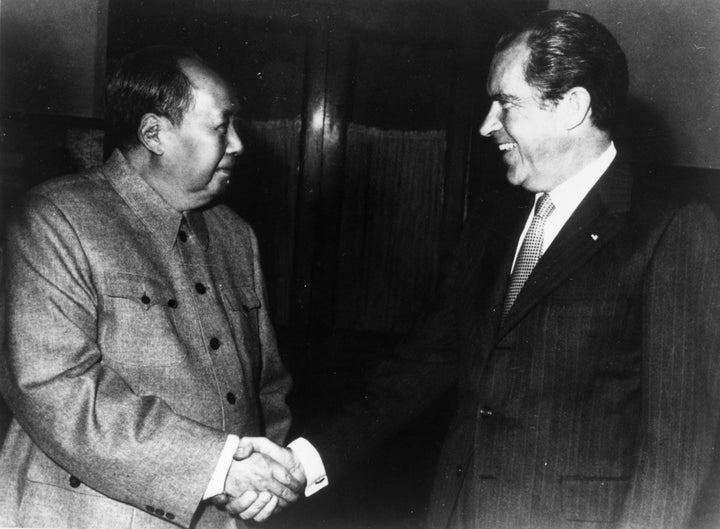
During the 1970s, China was at a crossroads. It had gone through a revolution, a devastating famine during the “Great Leap Forward” and years of directly or indirectly fighting the United States. However, it was able to survive those difficult years to become a global power. This transition began in 1972 when something unexpected occurred: détente with the United States. In an unprecedented move at the time, China’s Chairman Mao hosted President Richard Nixon, opening a major window of diplomatic and economic opportunities. By the late 1970s, with the death of Mao and the takeover of Deng Xiaoping as the “paramount leader,” China began to rapidly change. Without losing its revere for Mao or its political infrastructure, millions were taken out of poverty as China’s economy embraced export-led growth. The ideology that founded the “People’s Republic” was still present, but the country was able to move forward and establish relations with its once ideological opposite, the United States. The government no longer saw reform as a sign of weakness under Xiaoping’s leadership.
The crossroads China faced in the 1970s bears strong resemblance to what Iran has witnessed as well. In the 1980s, Iran, too, had gone through a revolution, a tragic war and indirect or direct conflict with the United States. However, the two paths diverge afterwards. Whereas China began major internal reforms, Iran’s newly appointed Supreme Leader Ayatollah Ali Khamenei prioritized the ideals of the revolution and a significantly slower post-revolution transition began. Today is the best time for the Iran to follow in China’s footsteps. Post-revolution Iran has never experienced such relative regional stability, and President Hassan Rouhani and his U.S. educated cabinet have already begun to rebuild relationships around the world.
But why did it Iran’s path diverge from China’s in the first place? There are a number of reasons, but one crucial one. Khamenei, a shaky revolutionary replacement in 1989 when he was appointed, was influenced by a particular historical event. Mikhail Gorbachev, the last leader of the Soviet Union, had embraced a policy of “perestroika,” or a policy of reforming the political and economic system, and improved relations with the United States ― only to see the Soviet Union slowly disintegrate until its eventual collapse in 1991. Khamenei and his principlist supporters throughout the government were highly concerned about similar events happening in Iran. One of the central ideals of the revolution was achieving Iranian “independence” and no longer remaining in the sphere of American influence. Iran, only a decade from a revolution and a devastating war where it found itself isolated internationally, was not about to have its own version of perestroika.
“It is the perfect timing to develop an Iranian version of the Chinese transition.”
This concern of a looming perestroika by Khamenei and his supporters has not changed for decades. For example, reformist President Mohammad Khatami saw his more moderate policies handcuffed in his second term after the 1999 protests, which led to President Mahmoud Ahmadinejad and his full embrace of the revolutionary principle of Iranian self-reliance ― the result being problematic, state-led reforms. Granted, responses from the United States did not help soften the worldview of Iran’s establishment figures either. Key examples include the embargo implemented by President Bill Clinton, the denial of Iran’s diplomatic outreach early in the Bush administration, and, of course, the 2011 sanctions.
But with the passing of the JCPOA in July 2015, Iran has another opportunity to reengage with the international community and the United States in particular. With a significant need for international investment and bureaucratic reforms, such as the enforcement of international copyright and trademark laws, Iran can no longer sustain this policy of slow, myopic reforms.
This is why it is the perfect timing to develop an Iranian version of the Chinese transition. Xiaoping was an influential leader who was able to make changes and create an updated “People’s Republic” despite domestic opposition. He was able to invoke clever rhetoric to invite capitalist attributes to the economy, call it “socialism with Chinese characteristics,” and still reject capitalism in an ode to the country’s revolutionary roots. To date, Iran has not had a leader with the necessary level of influence to create an Islamic Republic 2.0. The duo of current President Hassan Rouhani and Foreign Minister Javad Zarif come close, as the JCPOA is an unprecedented feat. Unfortunately, though, they have not been able to force this influence to go beyond the agreement and now face the power of Khamenei’s public insistence that dealings with the United States do not go beyond the nuclear realm, while his principlist supporters in the judiciary and Revolutionary Guard detain dual citizens in order to prevent any further détente.

How Trump’s Presidency Will Impact Iran’s Future
The real question in all of this is ultimately how Iran can develop the necessary environment to succeed in economic transformation were it to take the chance. It is crucial for the country to take a page from China and implement reforms that will allow for key foreign investment and internal development. But perhaps more importantly due to its ability to throw off Iran’s reform movement is figuring out how to deal with the impending Trump presidency. The election of Donald Trump has so far led a number of analysts to speculate that the prospect of the development of stronger U.S.-Iran relations ― and in turn its positive impact on Tehran’s own political scene ― are looking increasingly more grim. With the cabinet picks, it is easy to see why. If the “too many adventures overseas” version of Trump shows itself, and this is a big if, Iran could remain a low priority for President-elect Trump. This would help Iran’s own domestic political scene avoid a conservative backlash to what could have been a hawkish Trump presidency. Additionally, this would leave the door open for a more moderate supreme leader replacement when the time comes (or even perhaps a more emboldened presidency if the role of the supreme leader is weakened post-Khamenei). After all, reform-friendly election results in the Iranian parliament recently have only increased hopes.
Even if Trump does in fact move to a more hawkish stance towards Iran, the Iran deal would still likely remain intact since the other members of the P5+1 that negotiated the deal as well are unlikely to follow him in trying to kill it. As a result, Iran would be further emboldened by Trump’s isolation and could make reforms from a position of strength as relations with Europe and others around the world improve. The first signal of this being a real possibility is if the Iranian people still reelect President Rouhani this coming May, even if Trump decided to act on his anti-Iran instincts from the campaign.
“Even if Trump takes a more hawkish stance towards Iran, the Iran deal would still likely remain intact since the other members of the P5+1 that negotiated the deal are unlikely to follow him in trying to kill it.”
However, the main concern under a hawkish Trump presidency would be another incident in the Persian Gulf or another detained U.S. citizen. For example, when Iran detained the U.S. sailors who accidentally went into Iranian waters, Secretary of State John Kerry was able to call his counterpart and quickly resolve the situation. President Trump’s reaction to a similar situation is much more questionable. If he did act upon his more overzealous impulses, Trump would risk empowering the same principlists whose intention it was to ruin reform domestically by such an act. It will be critical for President Trump not to fall into that trap.
As of now, Iran is still in a strong position to make reforms in a domestically secure way and implement major domestic changes as China had done. Remember, most of China’s major reforms occurred during the Reagan administration that promoted American power projection as well.
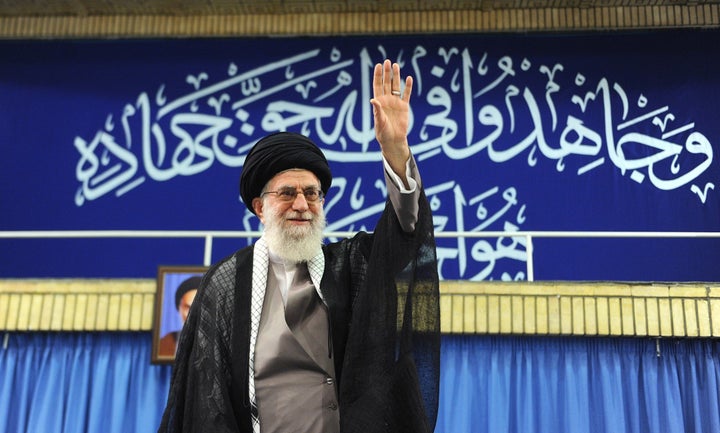
What’s Next?
Of course, the analogy is far from perfect and Iran today is in a much different place than the pre-rise China of the 1970s. Iran’s regional influence continues to grow between the fall of Saddam Hussein in 2003 and the overt military presence in Iraq and Syria today. Domestically, the economy has improved and hope is on the rise. China did not have either of these aspects going for it. If there was ever a time for more rapid reforms in Iran, it is now. Having the flag of the United States fly in an embassy in Tehran does not have to contradict the ideals of the Islamic Republic. With such a young populace, an updated domestic conversation that is not stuck in the 1980s would actually be to the benefit of stability – the number one priority of the government. Despite this, with a supreme leader with a foreign policy based on his memories of decades past, this epiphany is not likely to come soon. Iran needs its own Xiaoping, and it will have to wait for the post-Khamenei transition. After all, the Assembly of Experts, which is assigned to choose a new supreme leader, is as primed as ever to select a moderate candidate ― hopefully one that will speak to students about the future of the country rather than focus on the past.
“Having the flag of the United States fly in an embassy in Tehran does not have to contradict the ideals of the Islamic Republic.”
As we know, the ramifications of a Trump presidency on such a transition and Iran as a whole have yet to be seen. If Trump does in fact go back on the nuclear deal, the wall of mistrust between the countries that only just began the process of cracking will be many times taller, and it will take decades to recover. As Iran remains a critical player in the Middle East with a young population looking for better relations with the world, it will be important for Trump not to destroy the progress made with the JCPOA. As of now, Iran has never been in a better position to implement the successful perestroika China did nearly four decades ago. Let’s hope that rash decisions abroad and opportunistic elements at home do not ruin Iran’s once in a generation opportunity.

